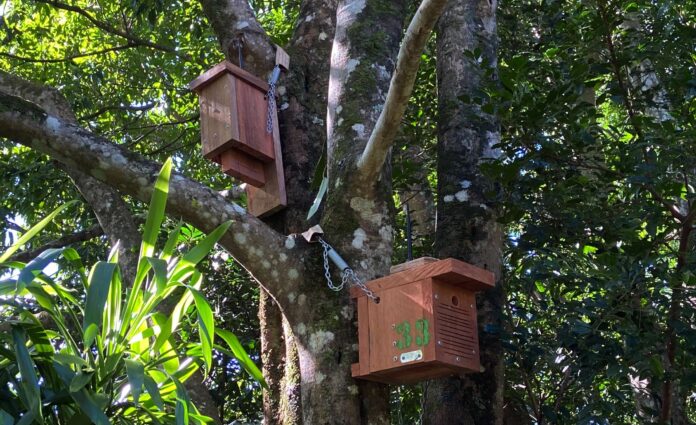An Australian-first research project will trial an innovative solution to provide homes for the Sunshine Coast’s tree-loving wildlife.
Seventy-seven hardwood nest boxes have been installed among the tree canopy in the Baroon Pocket Environment Reserve, near Mapleton, to mimic hollows that would otherwise take hundreds of years to develop naturally.
It’s hoped they will be safe houses for creatures including the powerful owl, cockatoos, squirrel glider, greater glider, possum, micro bats and antechinus, while helping experts learn more about them.
Cutting-edge technology, in the form of specially designed passive infrared detectors, have been attached to each box to record animal activity, temperature and humidity, and transmit data back to a station.
The project is part of a long-term plan by Sunshine Coast Council, Biodiverse Environmental and Project Ninox to restore the reserve.
Council’s natural areas officer Steven Milner said biodiversity within a reserve relied on a plentiful supply of habitat for wildlife.
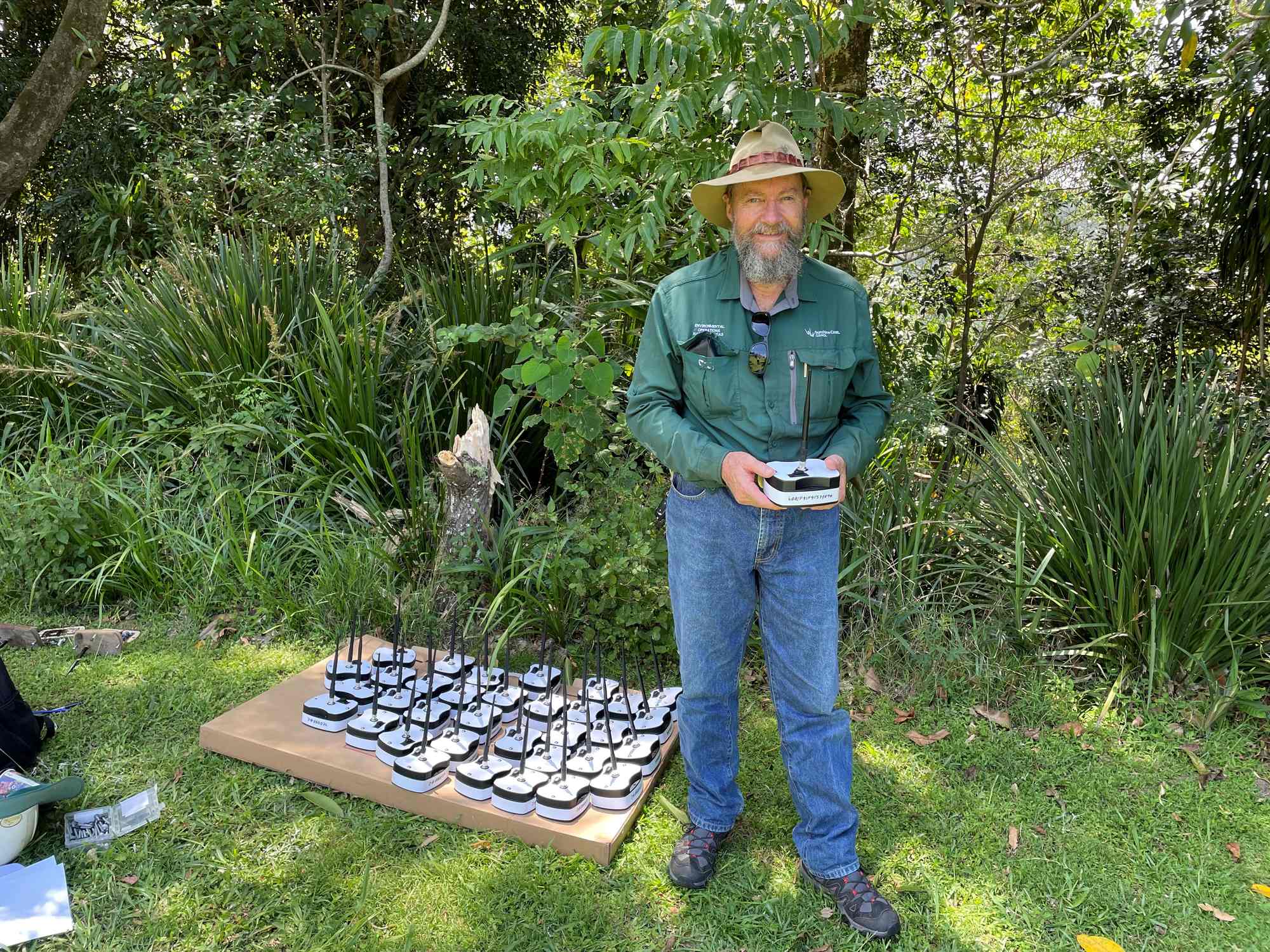
“On the Sunshine Coast, there is a lack of natural hollows for birds such as the powerful owl or marsupials like the antechinus to live in,” he said.
“This is because it can take up to 150 to 200 years for trees to age, go into decline and hollows to form. Very few trees here are that old due to past successive logging.
“Nest boxes are bridging the gap – fast forwarding time to create instant habitat for our wildlife today.
“This greatly benefits our region’s biodiversity and supports the survival of these species for generations and generations to come.”
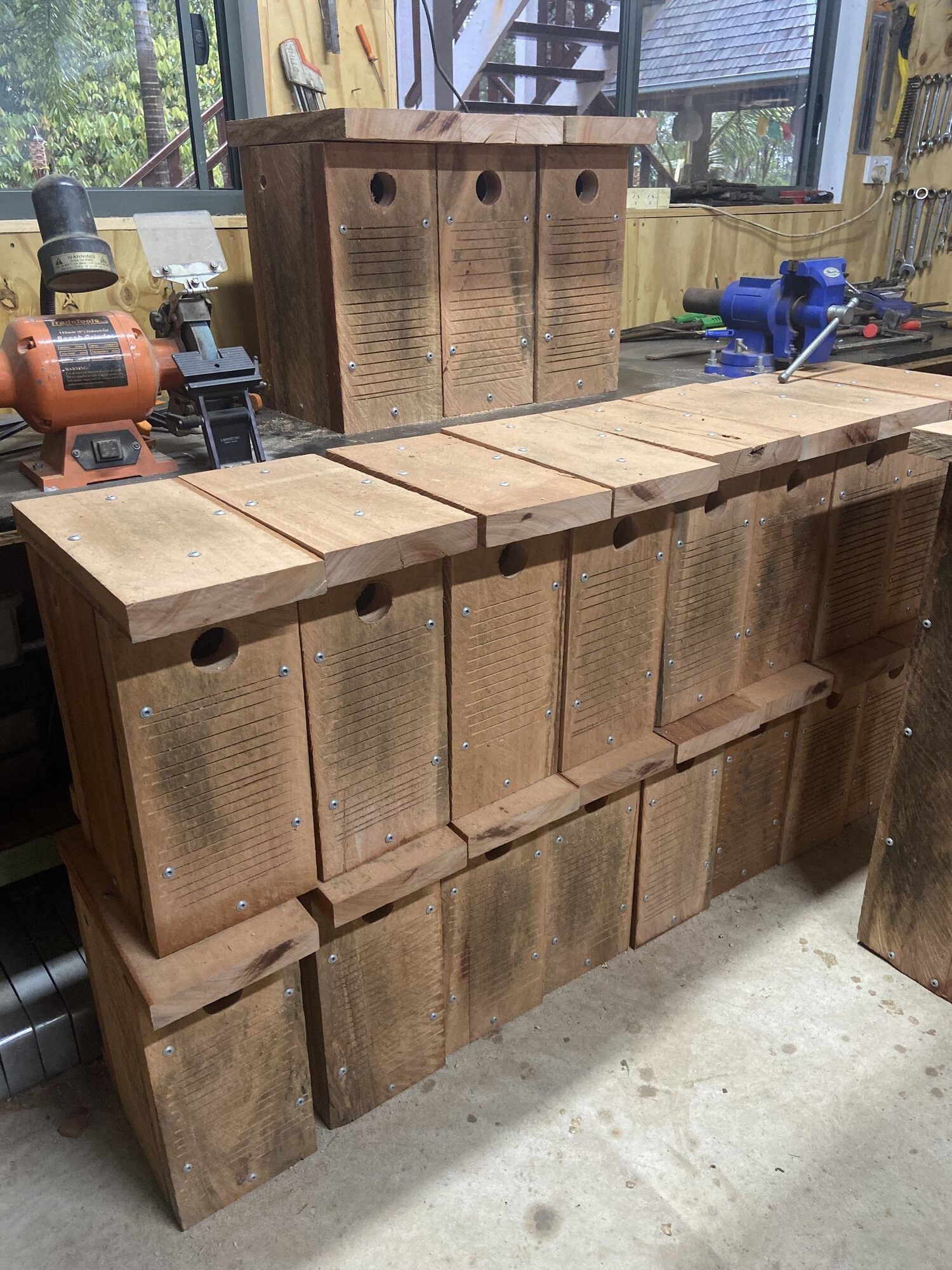
Nest boxes are usually made from 16mm thick plywood that only lasts from seven to 15 years and doesn’t provide much protection from the heat or cold.
Mr Milner said these nest boxes were constructed with native hardwood salvaged from road development projects and milled into 40mm rough sawn timber.
“We expect them to last for 40 years or more,” he said.
“Apart from the obvious sustainability benefit of a longer-lasting box, it also smells and feels more like the natural environment of our local fauna – and so we hope it’s more enticing as well.
“Using native timber should also help the temperature and humidity inside the box remain constant.
“Specially developed technology will allow us to test this theory as well as provide scientific data we can base future management decisions on.”
Project Ninox designed the innovative detectors attached to each box.
Every 15 seconds they record movements, humidity and temperature inside the box, and send data back to the base station.
Director Jack Spittle said the sensors were innovative in the conservation field because they used minimal power, had a long life span and allowed for real-time activity monitoring without the need for supervision.
“This makes large-scale conservation programs cost-effective and feasible,” Mr Spittle said.
“We hope this project is a catalyst to change the way monitoring is done in the future.”
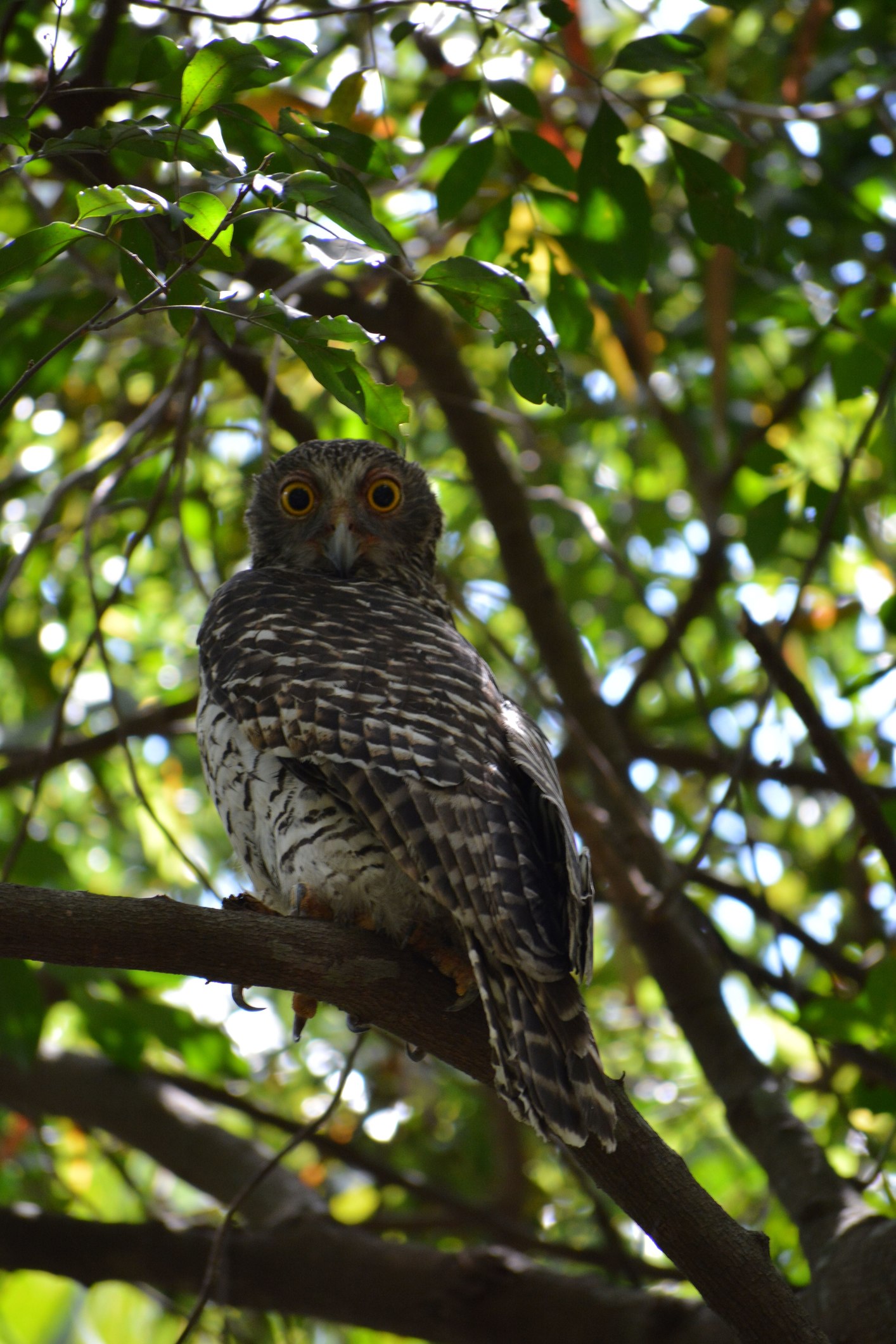
Biodiverse Environmental designed, built and installed the nest boxes, and worked closely with Project Ninox to fine tune and bring the new technology into the environmental field.
Director Liam Pratt said incorporating innovative technology into the project would allow each nest box to be closely monitored more than ever before.
“This means we will be able to track how successful our designs have been in re-creating the very niche environment each target species needs to thrive in,” Mr Pratt said.
“More importantly this includes tracking how the reclaimed hardwood nest boxes compare with the plywood versions.
“We’ve used industry information and our own on-the-ground experience to design each box with a particular species in mind.
“For example, with the powerful owl, we know it needs a large entrance, a large box size and grooves on the inside to act as a ladder to climb out, using its beak and claws.
“We then place it in a part of a tree with space to enable it to swoop up into the entry.
“When each box is installed, we record all the details like host tree species, aspect, height, how sheltered it is, what type of wood it’s made of and what species the box is targeted to.
“The sensor is activated when the box is secured in the tree, and a GPS records its location.
“The sensor data tells us when the animal is active inside the box – so we can visually spot it to confirm what species is using it and track the habits of the animal and the condition of the box over time.
“It also monitors each box’s thermoregulation capabilities – its ability to keep a constant temperature – and humidity which is important when providing animal refuge and to ensure breeding cycles are successful.
“Ultimately, this is an opportunity to create better habitat for our wildlife.”
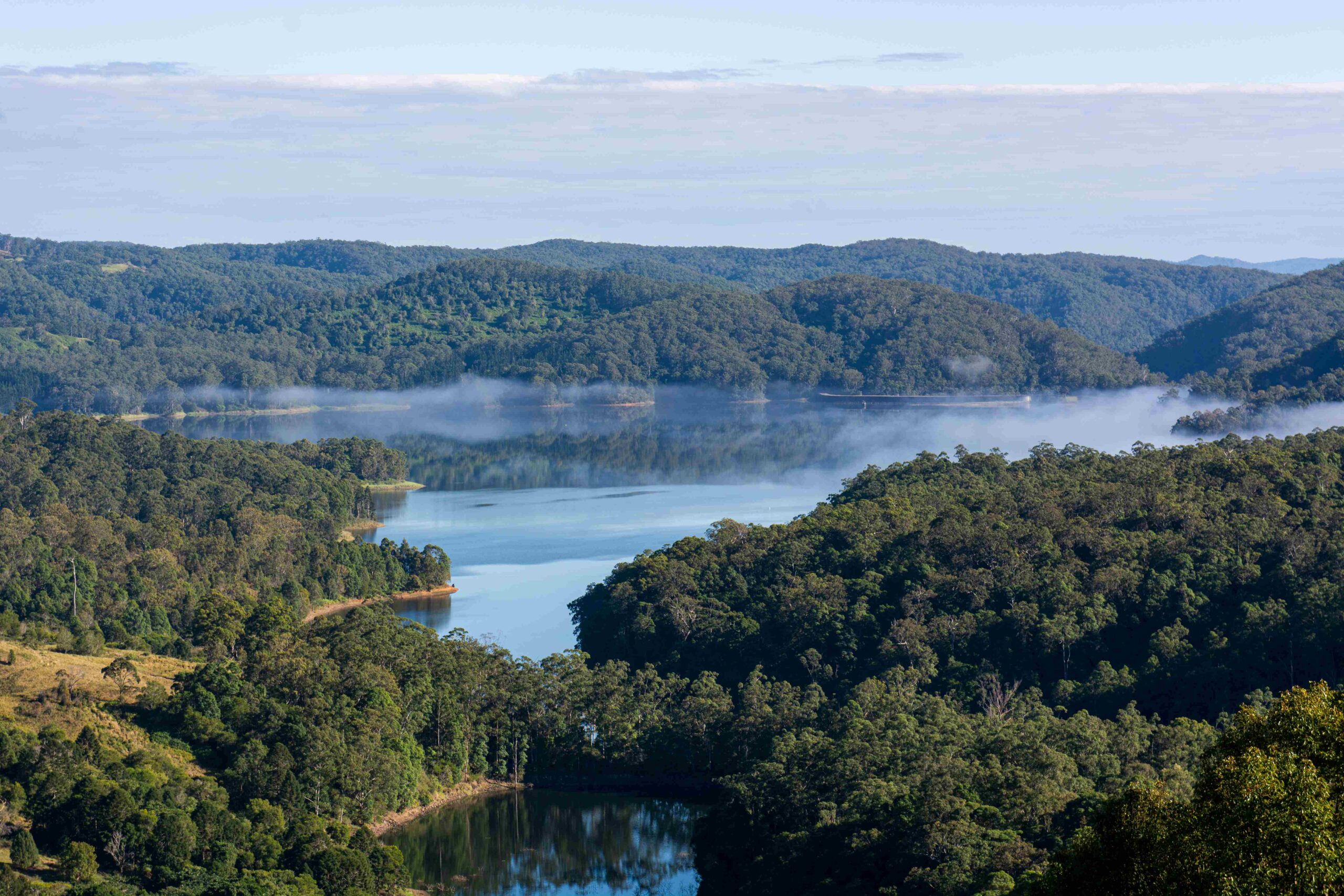
For the past few years, an assisted regeneration technique has been used to restore the Baroon Pocket Environmental Reserve.
Sunshine Coast Environment Portfolio Councillor Peter Cox said weeds choking the reserve were being progressively removed to give native seeds lying dormant in the soil a chance to see the sun and germinate.
“The land was historically cleared as a grazing paddock, so it doesn’t have a lot of habitat, but surveys have found endangered spiny crayfish, a platypus in the creek and a large variety of birdlife,” he said.
“Imagine what could be once it’s restored.
“With this project we will see if we have been successful in achieving our ultimate goal of improving its biodiversity by drawing in new species into the reserve.”
Jacob Champney and Kirean Aland sparked the idea for the trial and connected Sunshine Coast Council with Project Ninox.
Like stories about Sunshine Coast people doing great things? Help us deliver more by registering for our FREE daily news feed. All it requires is your name and email at the bottom of this article.


